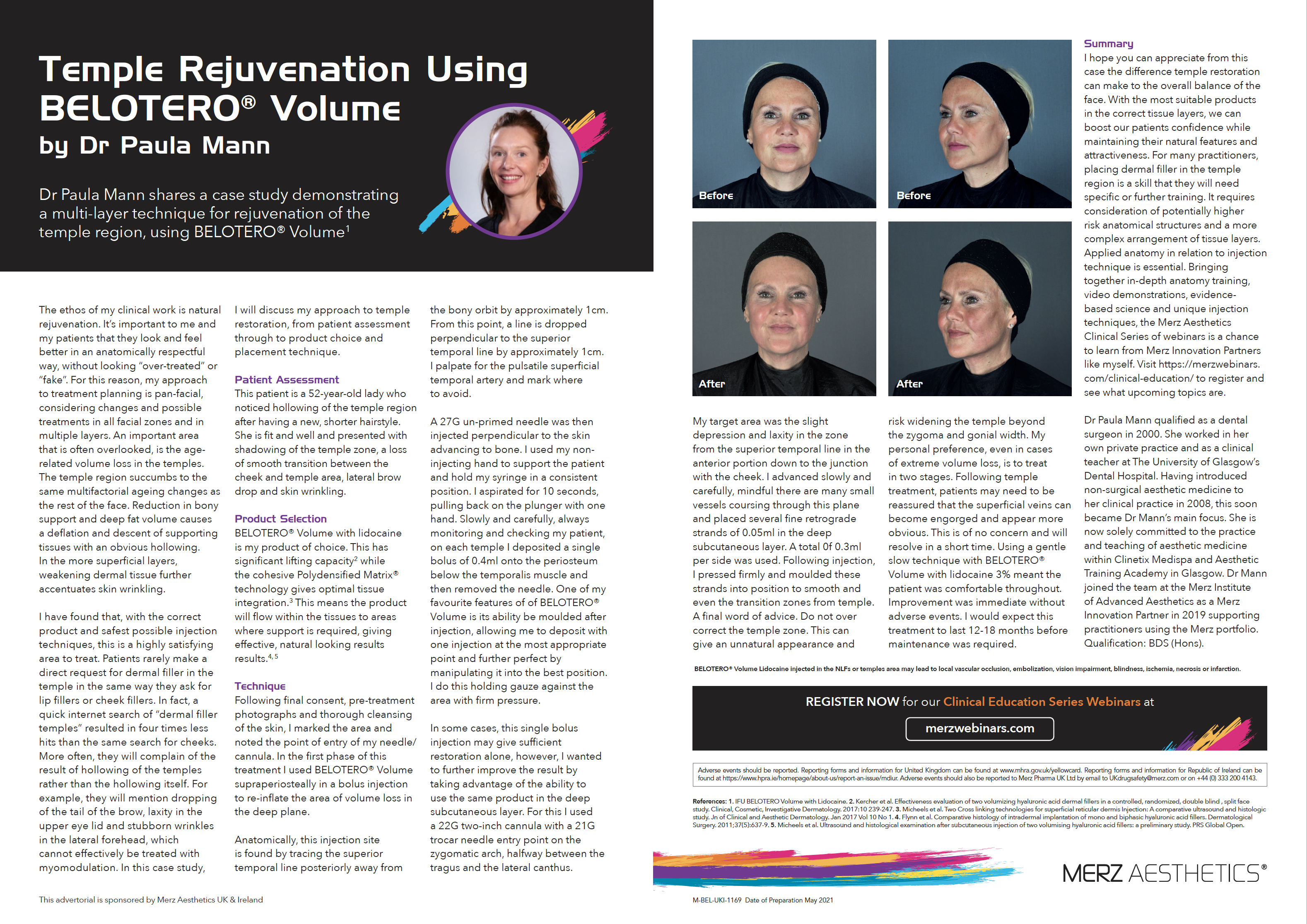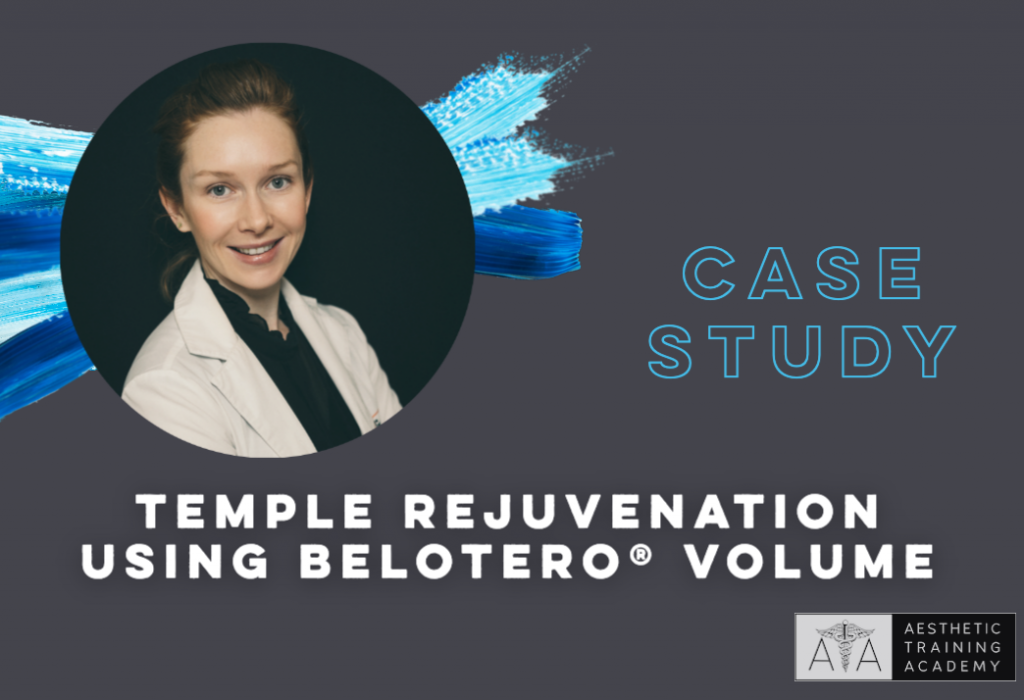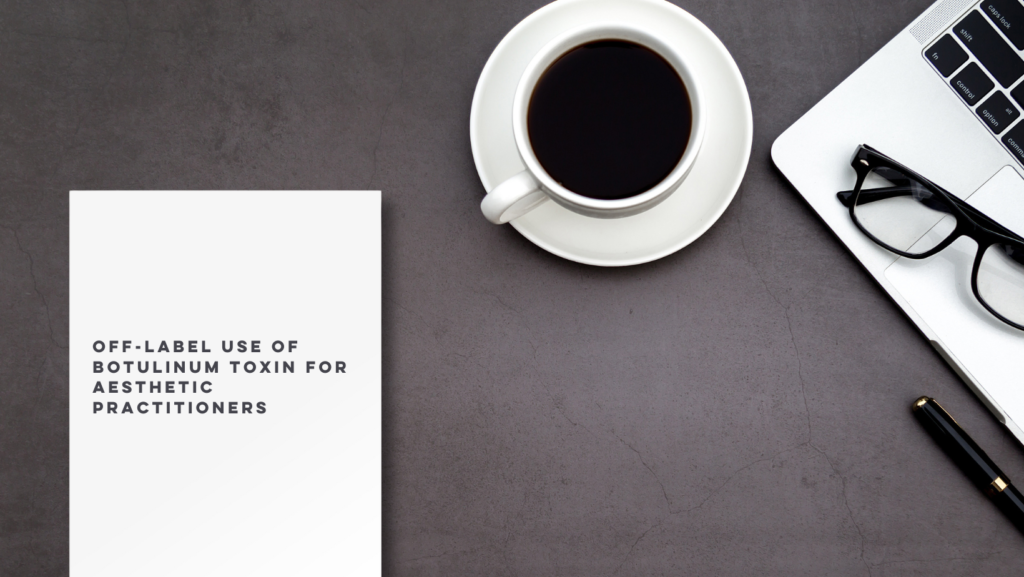Dr Paula Mann shares a case study demonstrating a multi-layer technique for rejuvenation of the temple region, using BELOTERO® Volume1.

The ethos of my clinical work is natural rejuvenation. It’s important to me and my patients that they look and feel better in an anatomically respectful way, without looking “over-treated” or “fake”. For this reason, my approach to treatment planning is pan-facial, considering changes and possible treatments in all facial zones and in multiple layers. An important area
that is often overlooked, is the age-related volume loss in the temples. The temple region succumbs to the same multifactorial ageing changes as the rest of the face. Reduction in bony support and deep fat volume causes a deflation and descent of supporting tissues with an obvious hollowing.
In the more superficial layers, weakening dermal tissue further accentuates skin wrinkling.
I have found that, with the correct product and safest possible injection techniques, this is a highly satisfying area to treat. Patients rarely make a direct request for dermal filler in the temple in the same way they ask for lip fillers or cheek fillers. In fact, a quick internet search of “dermal filler temples” resulted in four times less hits than the same search for cheeks. More often, they will complain of the result of hollowing of the temples rather than the hollowing itself. For example, they will mention dropping of the tail of the brow, laxity in the upper eye lid and stubborn wrinkles in the lateral forehead, which cannot effectively be treated with myomodulation.
In this case study, I will discuss my approach to temple restoration, from patient assessment through to product choice and placement technique.
Patient Assessment
This patient is a 52-year-old lady who noticed hollowing of the temple region after having a new, shorter hairstyle. She is fit and well and presented with shadowing of the temple zone, a loss of smooth transition between the cheek and temple area, lateral brow drop and skin wrinkling.
Product Selection
BELOTERO® Volume with lidocaine is my product of choice. This has significant lifting capacity2 while the cohesive Polydensified Matrix® technology gives optimal tissue integration.3 This means the product will flow within the tissues to areas where support is required, giving effective, natural looking results results.4,5.
Technique
Following final consent, pre-treatment photographs and thorough cleansing of the skin, I marked the area and noted the point of entry of my needle/ cannula. In the first phase of this treatment I used BELOTERO® Volume supraperiosteally in a bolus injection to re-inflate the area of volume loss in the deep plane.
Anatomically, this injection site is found by tracing the superior temporal line posteriorly away from the bony orbit by approximately 1cm. From this point, a line is dropped perpendicular to the superior temporal line by approximately 1cm. I palpate for the pulsatile superficial temporal artery and mark where to avoid.
A 27G un-primed needle was then injected perpendicular to the skin advancing to bone. I used my non-injecting hand to support the patient and hold my syringe in a consistent position. I aspirated for 10 seconds, pulling back on the plunger with one hand. Slowly and carefully, always monitoring and checking my patient, on each temple I deposited a single bolus of 0.4ml onto the periosteum below the temporalis muscle and then removed the needle. One of my favourite features of of BELOTERO® Volume is its ability be moulded after injection, allowing me to deposit with one injection at the most appropriate point and further perfect by manipulating it into the best position. I do this holding gauze against the area with firm pressure.
In some cases, this single bolus injection may give sufficient restoration alone, however, I wanted to further improve the result by taking advantage of the ability to use the same product in the deep subcutaneous layer. For this I used a 22G two-inch cannula with a 21G trocar needle entry point on the zygomatic arch, halfway between the tragus and the lateral canthus.
My target area was the slight depression and laxity in the zone
from the superior temporal line in the anterior portion down to the junction with the cheek. I advanced slowly and carefully, mindful there are many small vessels coursing through this plane and placed several fine retrograde strands of 0.05ml in the deep subcutaneous layer. A total of 0.3ml per side was used. Following injection, I pressed firmly and moulded these strands into position to smooth and even the transition zones from temple.
A final word of advice. Do not over correct the temple zone. This can give an unnatural appearance and risk widening the temple beyond the zygoma and gonial width.
My personal preference, even in cases of extreme volume loss, is to treat in two stages. Following temple treatment, patients may need to be reassured that the superficial veins can become engorged and appear more obvious. This is of no concern and will resolve in a short time. Using a gentle slow technique with BELOTERO® Volume with lidocaine 3% meant the patient was comfortable throughout. Improvement was immediate without adverse events. I would expect this treatment to last 12-18 months before maintenance was required.
Summary
I hope you can appreciate from this case the difference temple restoration can make to the overall balance of the face. With the most suitable products in the correct tissue layers, we can boost our patients confidence while maintaining their natural features and attractiveness. For many practitioners, placing dermal filler in the temple region is a skill that they will need specific or further training. It requires consideration of potentially higher risk anatomical structures and a more complex arrangement of tissue layers. Applied anatomy in relation to injection technique is essential. Bringing together in-depth anatomy training, video demonstrations, evidence-based science and unique injection techniques, the Merz Aesthetics Clinical Series of webinars is a chance to learn from Merz Innovation Partners like myself. Visit https://merzwebinars.com/clinical-education/ to register and see what upcoming topics are.
Dr Paula Mann qualified as a dental surgeon in 2000. She worked in her own private practice and as a clinical teacher at The University of Glasgow’s Dental Hospital. Having introduced non-surgical aesthetic medicine to her clinical practice in 2008, this soon became Dr Mann’s main focus. She is now solely committed to the practice and teaching of aesthetic medicine within Clinetix and Aesthetic Training Academy in Glasgow. Dr Mann joined the team at the Merz Institute of Advanced Aesthetics as a Merz Innovation Partner in 2019 supporting practitioners using the Merz portfolio. Qualification: BDS (Hons).
References: 1. IFU BELOTERO Volume with Lidocaine. 2. Kercher et al. Effectiveness evaluation of two volumizing hyaluronic acid dermal fillers in a controlled, randomized, double blind , split face study. Clinical, Cosmetic, Investigative Dermatology. 2017:10 239-247. 3. Micheels et al. Two Cross linking technologies for superficial reticular dermis Injection: A comparative ultrasound and histologic study. Jn of Clinical and Aesthetic Dermatology. Jan 2017 Vol 10 No 1. 4. Flynn et al. Comparative histology of intradermal implantation of mono and biphasic hyaluronic acid fillers. Dermatological Surgery. 2011;37(5):637-9. 5. Micheels et al. Ultrasound and histological examination after subcutaneous injection of two volumising hyaluronic acid fillers: a preliminary study. PRS Global Open.





